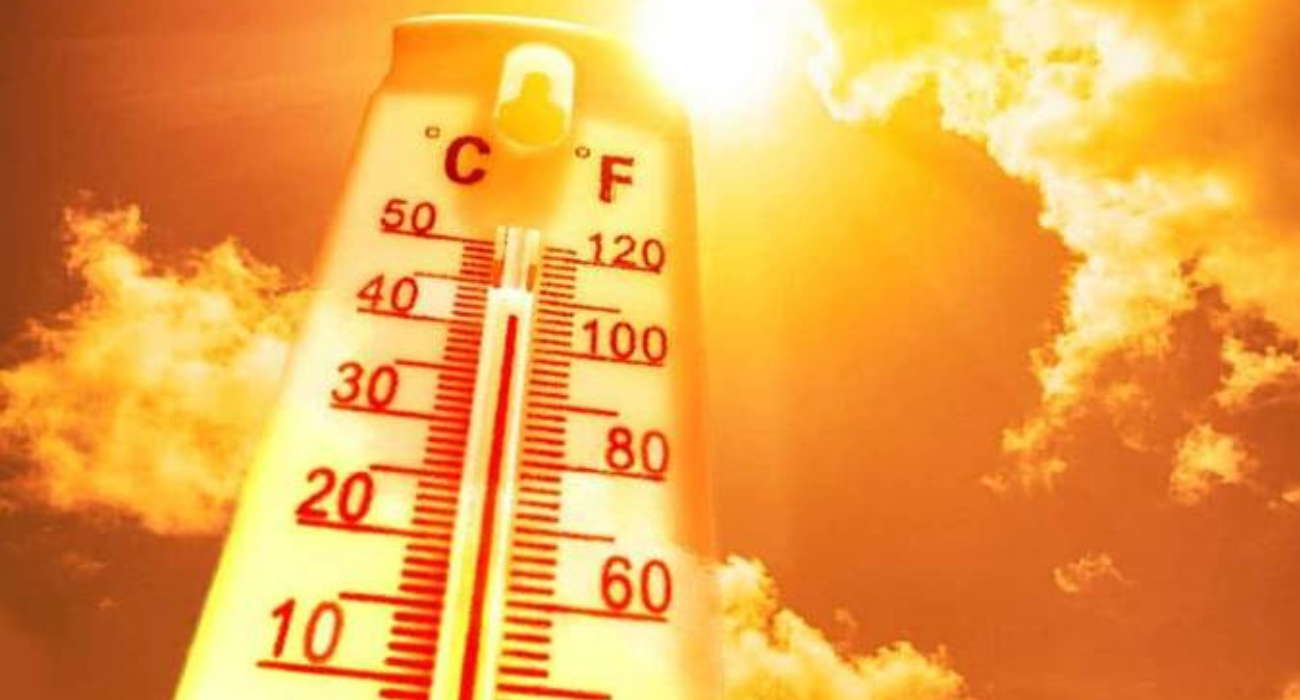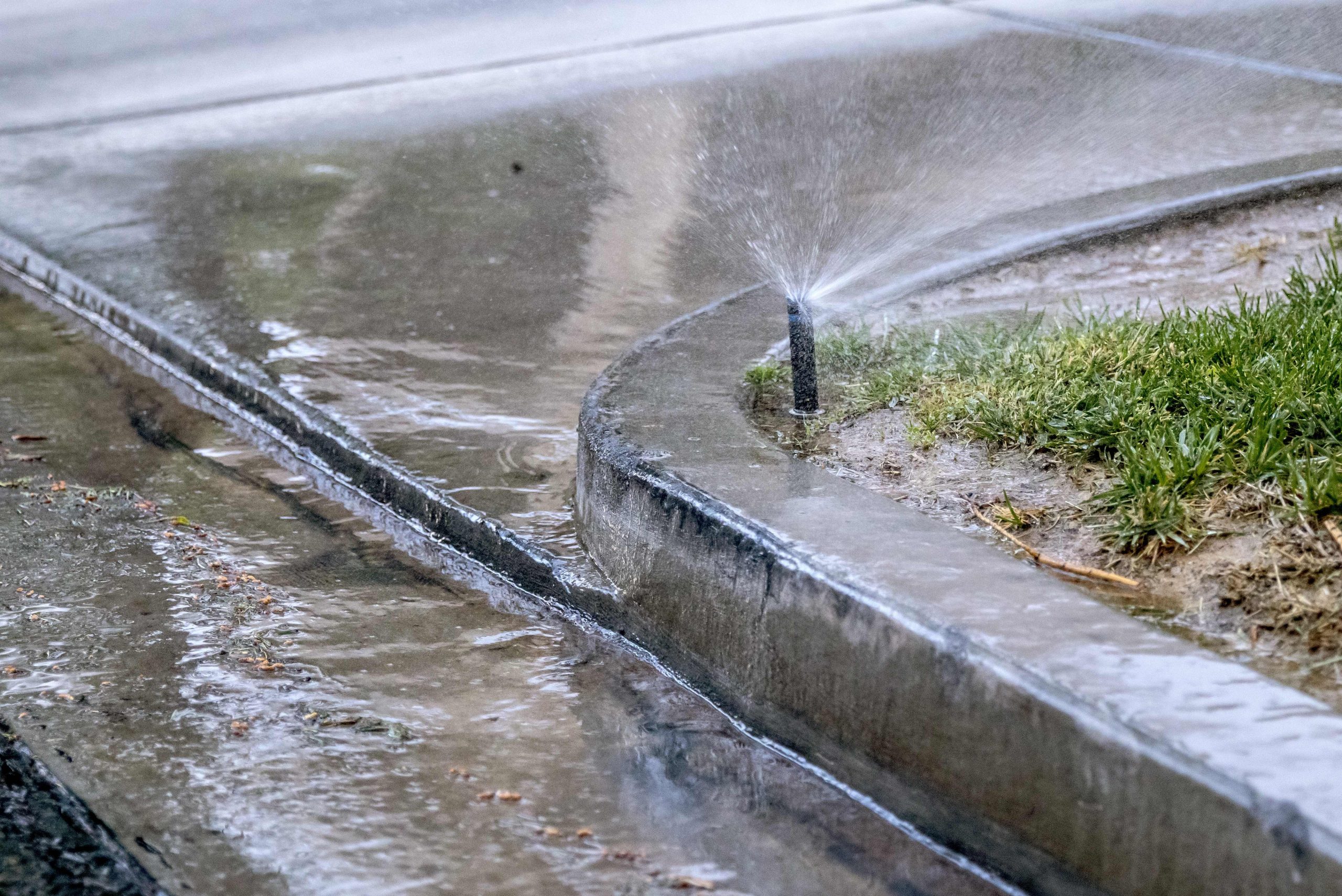
It’s no secret that southern Nevada gets really hot, and we are already seeing triple digits this year. Due to climate change, Las Vegas is among the fastest warming cities in the country. According to the CDC, heat is the single most deadly natural hazard and claims more lives across our nation than any other disaster. Heat has already claimed lives in our community, and the stakes grow ever higher as the impacts of our warming climate accelerate. That’s why Clark County is taking action on extreme heat– and fast.
Leading by Example: Kicking Off All-In Clark County
In 2019, Clark County started a multi-phased approach towards sustainability and climate action. All-In Clark County is the comprehensive effort to prepare Southern Nevada for a changing climate and create a sustainable future for all. This involves multiple planning efforts, beginning with a Sustainability and Climate Action Plan for County Operations. The idea here is for the County to lead by example, modeling climate change mitigation and adaptation for the community. Every All-In Clark County initiative is being led by four guiding principles: greenhouse gas emissions reductions, transparency, equity, and resiliency for social, economic, and environmental indicators.
Part of this effort included hiring fellowship positions, with one focused on urban heat. That Urban Heat Fellow, Ariel Choinard, has been working with Clark County’s office of sustainability since June of 2021 on a number of initiatives related to the county operations plan. Ariel worked with local heat vulnerability data and area stakeholders to assess the number of cooling centers in the metro area to ensure they are distributed equitably and can continue serving the most heat stressed neighborhoods. Where gaps in front line cooling center resources were identified, Ariel worked to expand the cooling center response and establish relationships with nearby municipalities to ensure everyone has access to vital cool spaces. Her participation in regional heat advisory groups encourages the deep collaboration necessary for confronting our region’s most deadly natural hazard, and addresses the interconnected nature of extreme heat. Extreme heat intersects with many other chronic stressors in Southern Nevada, like water scarcity, housing insecurity and pandemic pressures. The relationships and open communication fostered through her position will ensure that extreme heat is met with a coordinated and informed response from decision makers across the county.
Additionally, Ariel is making sure that County facilities and property are not contributing to the Urban Heat Island (UHI) effect. Identifying County properties adjacent to heat stressed urban areas gives the County an opportunity to prioritize equity and reduce any contribution to UHIs. Expanding urban tree canopy is identified in All-In as an effective, nature based, and adaptive method for creating heat resilience. However, in this extreme, not naturally forested and very arid environment, expanding tree canopy is just one solution Clark County can use to adapt to extreme heat. Ariel is working to identify what combination of heat mitigation techniques such as cool roofs, cool pavements, and built shade structures, will be most effective across the county. Lastly, she has maintained vital relationships with academic experts that have gotten funding for efforts to better understand the Southern Nevada heatscape.
Planning for the Community
The next step in the multi-phased approach is the development of a Community-Wide Sustainability and Climate Action Plan (Plan) under All-In Clark County. Starting with a regional greenhouse gas inventory, Clark County is committed to a plan that is both data driven and includes the perspectives of community stakeholders, residents, and visitors. The greenhouse gas inventory shows sector, source, and location of our greenhouse gasses to inform the Plan on actions that can make the most impact. The public remains engaged through surveys, pledges, forums, round table events, and more. The Plan will focus on six key areas: clean & reliable energy, connected & equitable mobility, diverse & circular economy, sustainable water systems, resilient & healthy community, and smart buildings & development
Climate Vulnerability Assessment
In addition to the greenhouse gas inventory and community engagement, Clark County is conducting a climate vulnerability assessment (CVA). This commenced with a technical report, reviewing historical data and projections related to climate hazards and events. Climate hazards in Clark County include: drought, wildfire, flash flooding, and of course, extreme heat. The technical report laid the groundwork to inform the rest of the CVA process, which included an organized and coordinated effort of more than 50 local government agencies, private industry, utilities and other community resources; all committed to addressing the impacts of extreme heat on our community.
Coined the CVA Stakeholder Working Group, this collection of people was carefully selected to converge and inform the CVA. This assessment provides a baseline to determine Clark County’s assets and systems as they relate to climate hazards and adaptability. More than just commissioning studies and surveys, the CVA Working Group drove the development of effective strategies and recommendations to directly adapt to and mitigate urban heat.
The CVA informs the solutions Clark County pursues, including researching opportunities to better understand how hot our heat burdened communities are becoming. Moreover, it provides opportunities for expanding heat mitigation techniques, identifying opportunities to protect workers from extreme heat events, and using parks and open spaces to reduce surrounding air temperature.
While the final CVA Report is not yet complete, we have some preliminary resiliency recommendations, including the coordination of dissemination of information related to climate hazards to ensure all residents have access to information and support networks. Another resiliency recommendation to invest in resilience hubs and public resources that reduce exposure to multiple climate and health hazards, especially for individuals most sensitive to heat.
Stay Cool, Clark County
July 2021 was the hottest month ever on record, hitting temperatures nearing 120 degrees in the region. In addition, according to the National Weather Service, 2021 was the sixth hottest year on record for Vegas. We could go on and on with statistics and data about how hot it is and how hot it will get. But, we know that addressing extreme heat in Clark County needs to happen…and now. What’s more is that we can use resiliency recommendations from the CVA process to guide us today.
In preparation for this year’s ‘hot season’, we worked with local partners to develop Stay Cool Clark County. This is a central resource for community members to stay “in the know” regarding how to plan for extreme heat. This website displays official cooling centers, libraries, pools and splash pads, parks and public transportation routes so users can easily locate and plan to get to their nearest cooling resource when needed. Fostering heat resilience goes beyond locating a cooling center, and Stay Cool Clark County helps community members connect with utility bill aid, weatherization programs, and energy saving initiatives. The site is designed to grow and incorporate new information and resources as Clark County and partners continue their work on extreme heat. As stakeholders and community members provide input, we intend to expand this resource to include urban tree canopy mapping, information on native and desert adapted trees, best practices for establishing trees, and a space for the public to share their challenges with extreme heat and suggestions for heat resilience strategies.
Climate change demands bold action to ensure Clark County’s future is healthy, livable, prosperous, and resilient. We cannot do that without resources for the community….and a way to easily find those resources. Stay Cool Clark County intends to do just that.
Tying it All Together
Clark County is striving to lead by example and prepare Southern Nevada for climate change. The All-In effort has been met with enthusiasm both from County partners and residents, without whom our urgent work would not be possible. Their perspectives, voices, and experiences have guided the process from the beginning, and will continue to inform and enrich our work.
Without this feedback, these partners, and alchemy of collaboration, we would not have something that is immediately actionable – and, we know we need to act today.
To stay up-to-date on our All-In Clark County sustainability efforts at AllInClarkCounty.com and learn about our ongoing plans to address extreme heat, visit StayCoolClarkCounty.com.
By,
Sam Baker, Sustainability Program Administrator, Clark County
with Ariel Choinard, Urban Heat Fellow, Clark County




